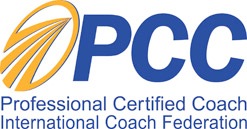AdultLeader Practices
Use Frustration to Challenge Yourself as a Leader
Experiencing frustration is common to all of us. Frustration is an emotion. It is also internal feedback that alerts us to the opportunity for change. I hear about the frustration my clients experience in their workplace on a regular basis – my direct reports are not doing what they need to, my organization isn’t changing to support my idea, my boss is not providing the kind of leadership we need, and the list goes on. I’m sure you can add to it. Frustration is an emotion. Human beings experience this emotion. In fact, it is unavoidable, so let’s let it be OK and then move on to use it. Frustration is internal feedback from you to you. It is you alerting you to the opportunity to think about the current situation in a new way that is more congruent with your AdultLeader. If you allow yourself to think about the situation in a new way, then you open the possibility for new ideas about how to handle it in a new way. What new behavior or action can you use to potentially accomplish a different result; one that might ease your frustration, one that might allow you to know that you have given your best effort, one that might actually move you closer to the result you want? Frustration can be welcomed as an opportunity to Close The Leadership Gap. This is the gap between where you are experiencing frustration because of your beliefs, perceptions, habits, expectations, and assumptions (what you think is right and true) AND your leadership potential (which is limitless and full of possibilities). When you are willing to leverage your unique strengths, skills, and experiences with self-knowledge, purpose and commitment, it becomes possible to take a shot at a different approach to the current frustrating situation. It feels good to be the AdultLeader when you choose to act instead of being a victim to the situation. The positive emotion you experience is also internal feedback from you to you. You experience it when you chose to Close the Leadership Gap by acting on your leadership potential. What is a current frustrating situation you want to have an impact on? Frustrating situations will continue to show up for you. You get to choose if you are willing to welcome the challenge. You can be the victim or you can act. It can seem easier to make it necessary for the others or the situation to change. It’s not. It is just frustrating. When you look at it this way, you don’t really have a choice. Please feel free to send your comments and...
Read MoreA Goal Is a Catalyst for Becoming More Than You Are Today
We all want or need to achieve goals and results. Results are important for our organizations, our teams, and us. We could argue that our jobs, finances, opportunities, and satisfaction are all dependent on our effectiveness at getting results and accomplishing goals. Maybe what matters more than the result itself is who we, our teams, and our organizations need to become in order to achieve this result. What new skills and knowledge do we need? What relationships do we need to manage more effectively? What risks do we need to be willing to take? What do we need to do differently than we have ever done before in order to achieve this result or goal? Our focus on getting a result or accomplishing a goal is the catalyst for change, for becoming more of who we are capable of becoming as an individual, a team, and/or an organization. The more conscious we are about defining what the change needs to be or recognize what change occurred, the more leverage we have for sustainable change, growth, and success. 1. At the start of the process, we can define who we need to become along with defining the result or goal. This creates deeper meaning, defines our aspiration, and sets us on the path to the result or goal with more purpose and energy. 2. After we have accomplished the result or goal, we can debrief who we have become. This is an opportunity for acknowledgement and appreciation. We can also codify what has changed and define best practices for the future. 3. If we didn’t accomplish the result or goal, we can debrief what happened. What worked? What didn’t work? What do we need to do differently or focus on next time so we increase our likelihood of success? By observing and acknowledging the change and growth that has occurred, we can transform how we think about ourselves as individuals, teams and/or organizations. We can then take on new and bigger challenges with a firmer foundation and more confidence in our ability to successfully reach our goals and celebrate who we are becoming along the way. My best to you. Please feel free to send your comments and...
Read MoreCreating a Context is a Simple and Powerful Leadership Practice.
Engaging the AdultLeader is our route to leadership when we choose to apply our unique strengths, skills, and experiences with self-knowledge, purpose and commitment. It can help for us to have some specific practices, habits, and/or rituals that we regularly apply to consciously interrupt our thoughtless (without thought) habits and reactions. One such practice is creating a leadership context. A simple definition of context is defining the circumstances that form the setting for an event, statement, or idea in terms that can be fully understood and assessed. We can do this by asking ourselves a few simple questions before we begin a conversation, meeting, presentation, email, or any other activity or form of communication that matters. With a defined context, it becomes clear how to proceed with purpose, commitment, focus and clarity. PRACTICE: Before I begin my conversation, meeting, presentation, email…..I regularly ask myself the following questions: 1. Why does this matter to me? Why is this important to me? This question connects me to my purpose and values. The answer will generate energy, passion and commitment to move forward. 2. What do I want to accomplish? This question helps me to clarify the goals or outcome I want. The answer will provide me with focus and direction. 3. Who do I want to be? This question invites my AdultLeader to consider how I want to show up as a leader. The answer will remind me that how I show up as a leader is a choice. The answers to these 3 questions become the foundation to answer the next question. 4. How will I do this? This question will help me to define my strategy and tactics. The answer will move me into action that is aligned with my AdultLeader, the self that chooses to authentically and effectively bring my real self into the world. This practice reminds you to interrupt what you are busy doing and give yourself some time for focus and reflection. It will usually take only a few moments, and may take a little while longer for a more difficult or important situation. With a defined leadership context, it becomes clear how to proceed in a manner that makes it more likely you will achieve your desired outcome. Defining a leadership context is a practice that can become a habit or ritual. Try it out: 1. What is a conversation, meeting, presentation, or email that is coming up that matters to you and that you would like to approach differently? 2. Take a few moments to ask yourself the 4 leadership context questions above. 3. Go try it out. 4. What did you do differently as a result of having asked yourself these questions? 5. How did it work out? Hope it worked out well for you. Please feel free to send your comments and...
Read More







